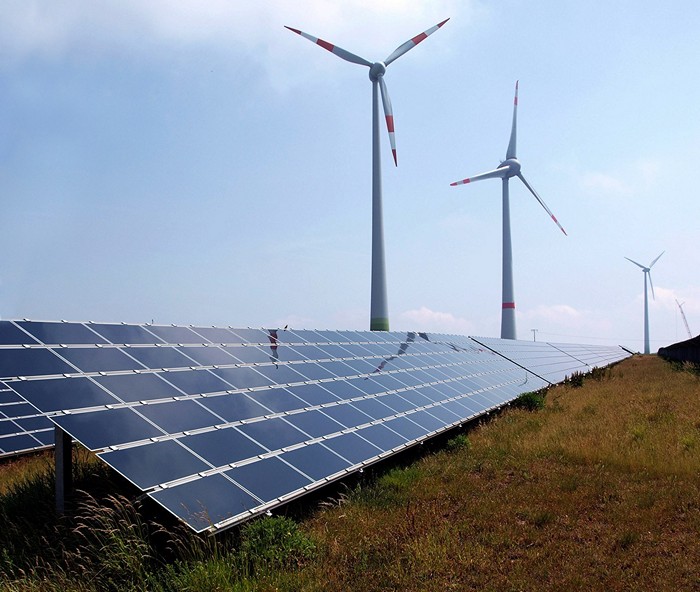India is among the largest producers in the world of energy from renewable sources. In the electricity sector, renewable energy accounts for 34.4 percent of the total installed power capacity. Large hydro installed capacity was 45.29 GW as of 31 March 2018, contributing to 13 percent of the total power capacity. The remaining renewable energy sources accounted for 20 percent of the total installed power capacity (71.325 GW) as of 30 June 2018.
Wind power capacity was 34,046 MW as of 31 March 2018, making India the fourth-largest wind power producer in the world. The country has a strong manufacturing base in wind power with 20 manufacturers making wind turbine models of different capacity and exporting to countries in Europe, the United States and other countries.
The government target of installing 20 GW of solar power by 2022 was achieved four years ahead of schedule in January 2018, through both solar parks as well as roof-top solar panels. India has set a new target of achieving 100 GW of solar power by 2022. Four of the top seven largest solar parks worldwide are in India including the second largest solar park in the world at Kurnool, Andhra Pradesh, with a capacity of 1000 MW. The world’s largest solar power plant, Bhadla Solar Park is being constructed in Rajasthan with a capacity of 2255 MW and is expected to be completed by the end of 2018.
Biomass power from biomass combustion reached 8.3 GW installed capacity as of 31 March 2018. Family type biogas plants reached 3.98 million.
India is running one of the largest and most ambitious renewable capacity expansion programs in the world. Newer renewable electricity sources are projected to grow massively by nearer term 2022 targets, including a more than doubling of India’s large wind power capacity and an almost 15 fold increase in solar power from April 2016 levels. These targets would place India among the world leaders in renewable energy use and place India at the centre of its ‘Sunshine Countries’ International Solar Alliance project promoting the growth and development of solar power internationally to over 120 countries. India set a target of achieving 40 percent of its total electricity generation from non-fossil fuel sources by 2030, as stated in its Intended Nationally Determined Contributions statement in the Paris Agreement.
A blueprint draft published by Central Electricity Authority projects that 57 percent of the total electricity capacity will be from renewable sources by 2027. In the 2027 forecasts, India aims to have renewable energy installed capacity of 275 GW, in addition to 72 GW of hydro-energy, 15 GW of nuclear energy and nearly 100 GW from other zero emission sources.
The 2022 electrical power targets include achieving 227GW (earlier 175 GW) of energy from renewable sources – nearly 113 GW through solar power, 66 GW from wind power, 10 GW from biomass power, 5GW from small hydro and 31GW from floating solar and offshore wind power. The bidding process for the further additional 115 GW or thereabouts to meet these targets of installed capacity from January 2018 levels will be completed by the end of 2019-2020. The government has announced that no new coal-based capacity addition is required beyond the 50 GW under different stages of construction likely to come online between 2017 and 2022.
India’s need to increase energy provision for its population and fast growing economy poses a formidable challenge which is perceived as both a great opportunity as well as a necessity for the country to increase the share of renewable in the overall energy mix. At the same time there is a need to provide energy access to rural areas and reduce import dependence on fossil fuels. India’s approach is to meet its energy needs in a responsible, sustainable and eco-friendly manner.

